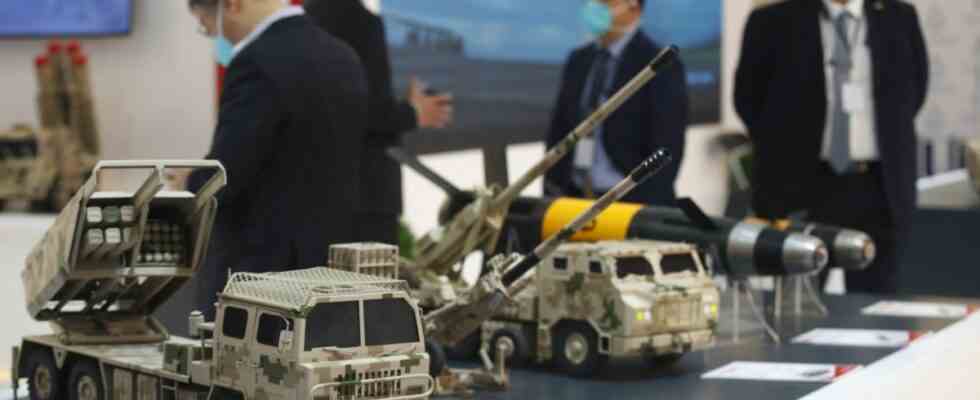According to peace researchers, global arms spending reached a record level last year. States worldwide invested 2,113 billion US dollars (about 1,956 billion euros) in their armed forces last year, more than ever before, announced the Sipri Institute on Monday in Stockholm. That was an increase of 0.7 percent compared to 2020 and an increase of 12 percent compared to 2012. According to this, global military spending grew for the seventh year in a row. Economic slumps caused by the corona pandemic have not stopped the upward spiral.
The USA, China, India, Great Britain and Russia have upgraded the most. Together, the five countries account for 62 percent of global military investment. Germany is seventh behind France. According to Sipri, the total amount of arms expenditure in 2021 corresponded to 2.2 percent of global gross domestic product. That was a slight decline of 0.1 percentage points compared to 2020. The regions of Asia and Oceania (plus 3.5 percent) and Europe (plus three percent) in particular invested significantly more in the military and armaments. The USA remained the leader.
The USA is at the top: No other country spends so much on the military
Even though US spending fell by 1.4 percent last year compared to 2020, partly because of high inflation, Washington spent $801 billion on its armed forces, more than any other country. This corresponded to a global share of 38 percent. At the same time, US funding for military research and development grew by 24 percent between 2012 and 2021. According to the report, the United States is primarily focused on modernizing weapons systems. “The US government has repeatedly emphasized the need to maintain the US military’s technological lead over strategic competitors,” said Sipri researcher Alexandra Marksteiner. This primarily refers to China and Russia.
China is in second place with a world share of 14 percent. Last year Beijing spent an estimated 293 billion US dollars on armaments, which was 4.7 percent more than in 2020. Compared to 2012, this even means an increase of 72 percent. China’s military spending grew for the 27th year in a row. Sipri has not documented this uninterrupted upward trend for any other country in the world. India, which ranks third, invested $76.6 billion over the period under review, up 0.9 percent from 2020. The UK’s spending grew 3 percent to $68.4 billion.
Russia and Ukraine increased their military spending
Russia (#5) increased its military spending by 2.9 percent to $65.9 billion for the third year in a row. High income from oil and gas would have favored the Russian armaments budget, said Sipri researcher Lucie Béraud-Sudreau. Between 2016 and 2019, Moscow’s investments in armaments fell due to low energy prices and economic sanctions in response to Russia’s annexation of Crimea in 2014. Ukraine, which was attacked by Russia on February 24, has also increased military spending significantly in recent years : Between 2014 and 2021, these grew by 72 percent, compared to ten years ago even by 142 percent. The trend was interrupted shortly before the Russian invasion; Ukrainian military spending fell by 8.5 percent to $5.9 billion last year. However, military spending still accounted for 3.2 percent of Ukraine’s gross domestic product.
Germany spent 56 billion US dollars (about 51.8 billion euros) on its military last year. Also because of the high inflation, that was 1.4 percent less than in 2020. The armaments share was therefore 1.3 percent of the gross domestic product. A few days after Russia invaded Ukraine, Chancellor Olaf Scholz (SPD) announced a special fund of 100 billion euros for the Bundeswehr. According to the report by the Stockholm peace researchers, other European NATO member states also declared that they would increase their military spending, particularly for new weapon systems. This should meet or exceed the two percent target of the NATO defense alliance. In addition to Germany, according to Sipri, these were Belgium, Denmark, Lithuania, the Netherlands, the Netherlands, Norway, Poland and Romania.

